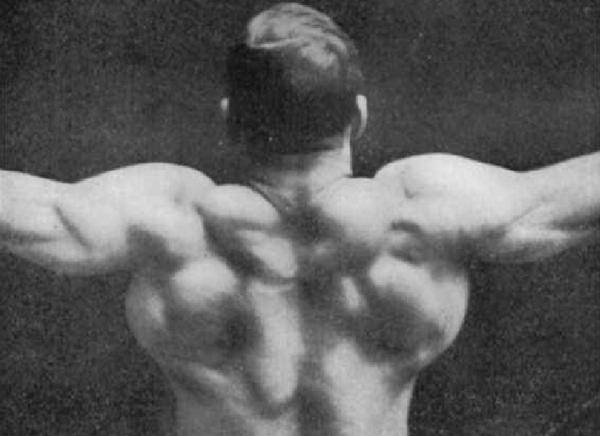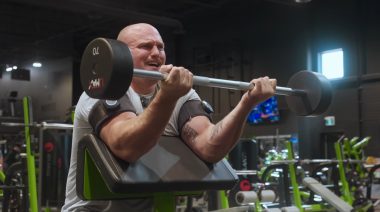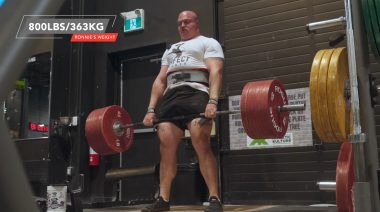Click Here to Start Dave Whitley’s Free Strength Program
In my last article, we talked about the mindset and training principles that guided the old-time performing strongmen and how to apply them to a modern strength-seeker’s goals. As the saying goes, “Success leaves clues.” So, let’s look at the old-timers and see if we can get them to come up with a clue or two for us.
Old-time strongman Hermann Goerner.
1. Approach Training as a Practice
We covered this in part one, but it bears repeating here because it is that important. If you want to get better at something, then you must practice consistently and intelligently. There is no substitute for it and you ain’t gonna be able to rush it, shortcut it, or fake your way through it.
2. Keep Loads in the 60-85% Range Most of the Time
At first this seems counterintuitive. In order to get stronger, we have to lift very heavy stuff all the time, right? Actually, that is backwards. To lift heavy stuff, we have to get strong first.
For most people, going above this 60-85% of a 1-rep-maximum range too often or for too long can wind up being too taxing on the nervous system. In my own experience and with my clients, I have seen that the majority of the gains happen in this 60-85% range. Strength comes without having to kick your own ass and destroy yourself in the gym every single session. Sticking in this range allows you to recover quickly and be ready to go again the next day.
Beyond that, there’s a word I use for folks who insist on going all out, all the time: broken. You have a choice to keep making progress for the long haul and be healthy while you do it or push too hard, too much and bust something. It’s up to you.

Old-time strongman Maxick.
3. Use Full-Body Movements the Majority of the Time
Full-body movements are paramount to building full-body strength. Bending a horseshoe like an old-time strongman requires using all your bodily force and energy. If you want to be strong like an old-time strongman, but do not want to bend steel, then take the core principle – full-body power – and apply it to your chosen lift.
Deadlifts, squats, cleans and presses, get ups, snatches – these are the kind of movements that build coordination and seamless power in the whole body. Show me someone with a big deadlift who is not strong all the way around. Can’t do it, can you?
That is one of those success clues we talked about. Step away from the lat pulldown machine and load up that bar. Get your deadlift up around double bodyweight and notice how your lats and arms grow along with the weight on the bar.
4. Develop Your Grip Strength
The old-time strongmen knew that if you couldn’t hold on to something that you would have a really hard time lifting it. In our previous training examples, we included deadlifts, kettlebell swings, and snatches. All of these have a solid grip element to them without having to do any specialized grip work.
We also included a special kind of curl called a plate curl (explained in the video above) to work on our finger and wrist strength. The kind of strength we need for ripping decks of cards and phonebooks into pieces.
5. Strengthen Your Midsection
Long before “core” was a catchphrase in the fitness world, old-time strongmen knew the value – make that the the necessity – of having a strong midsection. The abs, the obliques, and the lower back are literally at the center of our strength. Maximize them and you get stronger overall.
In the workouts that I outlined for in part one, you will find a couple of exercises that have a surprisingly strong effect on your midsection: the Zercher squat and the get up. Doing these kinds of movements gives you the strength through the middle that allows for a great transfer of power and protects the lower back.
6. Make It Look Easy
Understand the relationship between tension and relaxation. Tension is strength, but it is also fatigue. Relaxation is endurance, but cannot exert maximal power. Striking the balance is the key.
You don’t get any extra points for making faces or looking like you are about to die. Consider this the next time you watch an athletic event and think of what is more impressive – someone who looks like that are about to lose the whole thing or someone who is in complete control the whole time?
If you are staying in your 70% range most of the time and treating your session as a practice or performance, then it will be easy to make it look easy. See how it all works together?
Apply these ideas to your own training watch how strong you get and how much fun you have getting there. See you on the stronger side.






